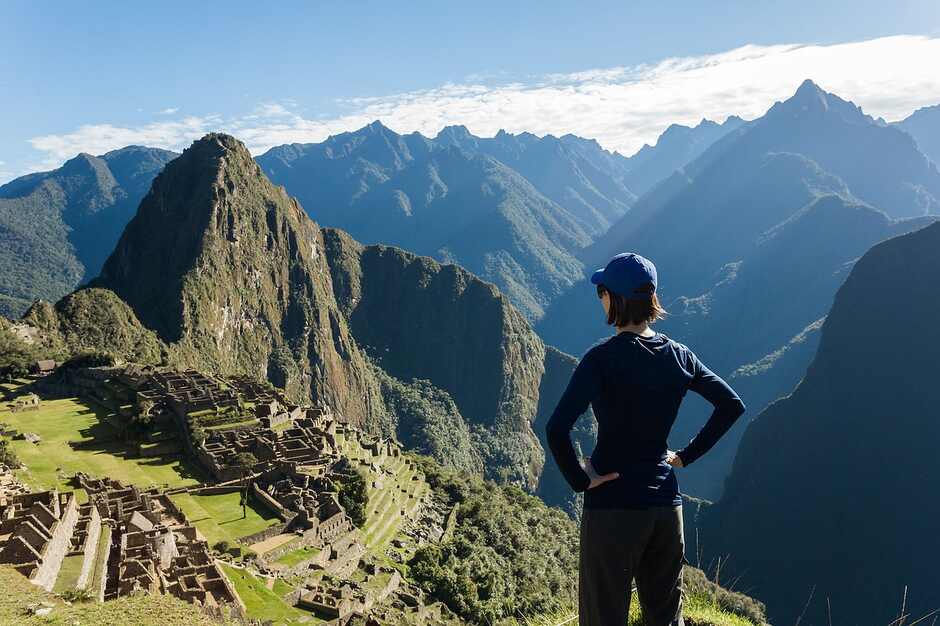13 things to know before going to Peru

There is always a first time for everything, and just like you, millions of travelers head to Peru every year. For most of them, it's their inaugural visit to Peru, a country and continent that offer a diverse and distinct social and natural environment compared to their home country. With limited knowledge of what to expect, they rely on online information, travel catalogs, and word-of-mouth from friends and family.
Your intention for this trip is to break away from the ordinary, modern, and westernized world. I must say, you've made the right decision to come here. Whether you're seeking cultural immersion, gastronomic delights, or thrilling adventures, Peru offers a true journey.
The best time to travel to Peru depends on your specific destinations within the country. If you plan to explore the Peruvian beaches, the weather is generally pleasant throughout the year, without extreme heat or cold. However, the optimal months for beach visits are December, January, February, and March, despite it being the rainy season. During these months, temperatures are moderate, even high. On the other hand, if you're interested in visiting the interior, such as Cusco or Machu Picchu, it's advisable to avoid the rainy season and plan your trip between April and November, which is the dry season. It's important to note that the rainy season doesn't imply constant rainfall. Instead, there may be sporadic heavy showers that last for a short duration. In such cases, it's best to find shelter, wait for the rain to subside, and continue exploring.
For many travelers, Peru is a new and exciting destination that offers a unique cultural and natural experience. Whether you've heard about it from friends, seen it online, or read about it in travel catalogs, here are 13 important facts and tips to keep in mind before your trip.
1. Best Time to Travel: The ideal time to visit depends on your destination. Coastal regions have a good climate year-round, while the dry season from April to November is best for exploring the interior.
2. Currency Exchange: Regarding currency exchange in Peru, the official currency is the Nuevo Sol, but US dollars are widely accepted. Exchanging dollars is usually easier than exchanging Euros, particularly in less touristy areas where it can be more challenging. To ensure smooth financial transactions during your trip, I recommend carrying some local currency "soles". If possible, exchange them in your home country before departure.
3. Altitude Sickness: If visiting high-altitude areas like Cusco, it's important to acclimate slowly, avoid exertion, and try coca tea or leaves to alleviate symptoms.
4. Peruvian Cuisine: Peru is renowned for its gastronomy, so be sure to try local dishes like ceviche, lomo saltado, and anticuchos. Don't miss out on the unique fruits and beverages such as pisco sour and Inca Kola.
5. Transportation: Peru has a well-developed transportation system with buses, taxis, and rideshare services in cities like Lima. Buses are the most common way to travel between cities, while trains are popular for reaching Machu Picchu.
6. Safety Precautions: Peru is generally safe, but it's important to be cautious of theft and scams. Avoid displaying valuable items, stay in well-lit areas, and consider travel insurance for added protection.
7. Must-See Places: Peru offers a wealth of attractions, including Machu Picchu, the Sacred Valley, Lima, the Amazon rainforest, Lake Titicaca, and the Nazca Lines. Plan your itinerary based on your interests and available time.
8. Language: Spanish and Quechua are the official languages, but English is spoken in many tourist areas. Learning basic Spanish phrases will be helpful, especially in remote locations.
9. Internet and Communication: Internet access is generally good in urban areas and tourist spots, with many establishments offering free Wi-Fi. Consider purchasing a local SIM card or checking roaming charges with your mobile provider.
10. Health and Vaccinations: Check with a travel health specialist to determine if you need any vaccinations before visiting Peru, especially for specific regions or activities. Protect against mosquito-borne diseases with repellent and appropriate clothing.
11. Respect for Local Customs: Show respect for Peruvian culture and traditions by dressing modestly, asking for permission before taking photos, and being open to learning about local customs. This will enrich your experience.
12. Vaccinations: There are no mandatory vaccinations for entry into Peru. However, if you plan to visit the Amazon region of the country, it is advisable to receive the yellow fever vaccine as recommended by the Ministry of Health. For more information on vaccinations, please consult this resource.
13. Altitude Sickness or "Soroche": Certain cities in Peru, especially in the southern and central highlands, are situated at altitudes exceeding 4,800 meters above sea level. To prevent altitude sickness, it is recommended to ascend gradually when traveling to the highlands by land and allow yourself sufficient time to rest upon arrival for proper acclimatization. It is best to rest on the first day, consume light meals, and stay well-hydrated. If you have a heart condition, it is advisable to consult your doctor before embarking on your journey. Slow walking and frequent rest breaks are recommended. Adequate sleep, light meals, and abstaining from alcohol are also beneficial. To combat altitude sickness, known as "soroche" in Peru, drinking coca tea or chewing coca leaves is advised. The locals often suggest coca tea, which is not only effective but also quite enjoyable. If you mention taking altitude sickness pills to the locals, they might find it amusing!
Lastly, be open to immersing yourself in Peru's rich culture and traditions. Explore local markets, interact with the friendly locals, and participate in traditional festivities if you have the chance.
Please click here to get the complete details on available trips, itineraries, accommodation, cost, visa , vaccination, airport arrival and the rest of it. »
